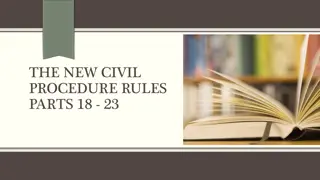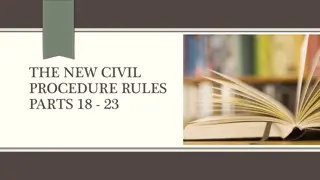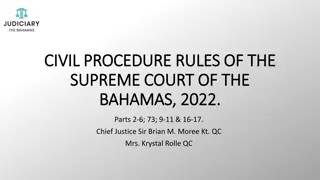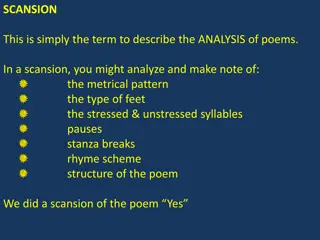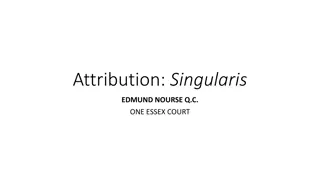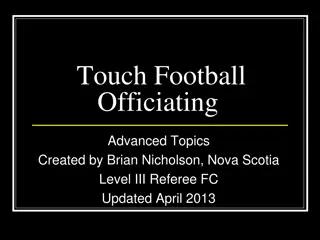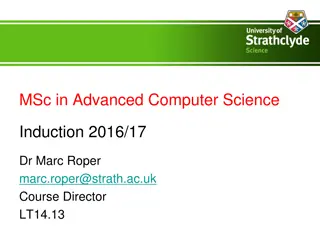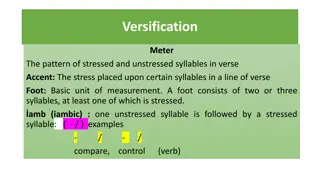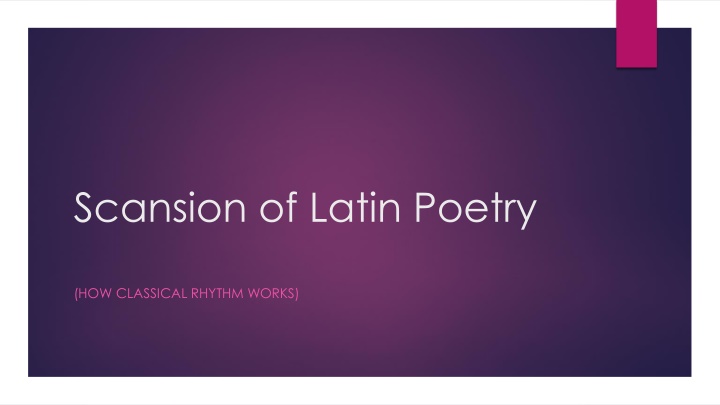
Latin Poetry Scansion: Classical Rhythm Exploration
Delve into the intricate world of Latin poetry scansion and classical rhythm. Discover how quantitative meter defines syllable value, explore ellision, long by nature vowels, diphthongs, and long by position concepts essential for scanning Latin verse.
Download Presentation

Please find below an Image/Link to download the presentation.
The content on the website is provided AS IS for your information and personal use only. It may not be sold, licensed, or shared on other websites without obtaining consent from the author. If you encounter any issues during the download, it is possible that the publisher has removed the file from their server.
You are allowed to download the files provided on this website for personal or commercial use, subject to the condition that they are used lawfully. All files are the property of their respective owners.
The content on the website is provided AS IS for your information and personal use only. It may not be sold, licensed, or shared on other websites without obtaining consent from the author.
E N D
Presentation Transcript
Scansion of Latin Poetry (HOW CLASSICAL RHYTHM WORKS)
Overview Latin, like may other classical languages, uses quantitative meter for its verse. This means that unlike English, where the accent of a given syllable determines its value in verse, a Latin syllable's value is determined by the length of time it takes to say it.
ELLISION If two words are on the same poetic line, and the first ends with a vowel or m, and the second begins with a vowel or h, the last syllable of the first word and the first syllable of the second word elide, forming a single consonant, which has the value of the longer of the two syllables. This syllable is pronounced either as a combination of the two syllables, or, by individual choice, as the second syllable. If the second word is est, "is," the syllable is pronounced as the first syllable with "-st" added to the end.
LONG BY NATURE: A vowel that is long, i.e. marked with a macron makes its syllable long. It is then called "long by nature. Since most scansion activities do not have macrons, this often must be checked using a dictionary.
DIPTHONGS This also includes the diphthongs: , au, ei, eu, oe, and ui, but only when none of the vowels in the dipthongs are long or marked by a dieresis (e.g. di or reus.)
LONG BY POSITION If a vowel has two or more consonants between itself and the next vowel, it makes its syllable "long by position." The letter x (and sometimes z) counts as two consonants for the purposes of scansion. The digraphs (two-letter combinations) ch, ph, th, qu and sometimes gu and su count as single consonants. A mute (b,c,d,g,p, or t) followed by a liquid (l or r) can count as a single consonant, as long as they are in the same word.




